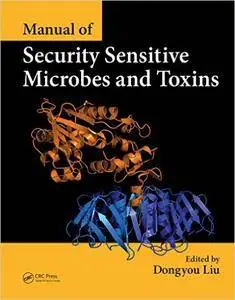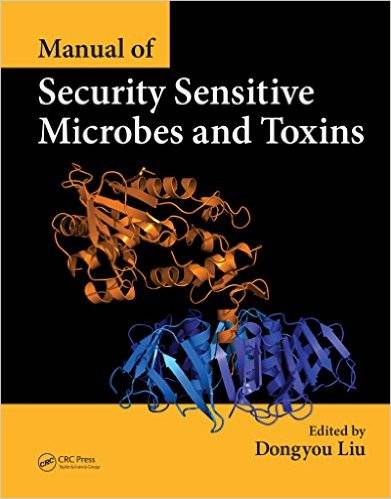Dongyou Liu, "Manual of Security Sensitive Microbes and Toxins"
English | 2014 | ISBN: 1466553960 | PDF | pages: 874 | 35,2 mb
English | 2014 | ISBN: 1466553960 | PDF | pages: 874 | 35,2 mb
Security sensitive microbes (viruses, bacteria, fungi, and parasites) and toxins, which are often referred to as the select agents and toxins, have the capacity to cause serious illness and death in humans, animals, and plants. Throughout history, these microbes and toxins have been exploited in one form or another as biowarfare and bioterror agents that create fear and panic well beyond any actual physical damages they might cause.
Manual of Security Sensitive Microbes and Toxins provides comprehensive, state-of-the-art coverage of microbes and toxins of biosecurity concern. The ultimate goal is to increase our awareness of these agents and enhance our preparedness against any future bio-emergencies.
The book begins with an introduction containing a brief overview of the historical aspects of security sensitive microbes and toxins. This is followed by a concise summary of the current status in relation to the regulation of security sensitive microbes and toxins and a discussion of future development trends.
The book is divided into seven parts:
Microbes and Toxins Affecting Humans and Animals: Viruses
Microbes and Toxins Affecting Human and Animals: Bacteria
Microbes and Toxins Affecting Human and Animals: Fungus and Parasite
Microbes and Toxins Affecting Human and Animals: Toxins
Microbes Affecting Animals: Viruses
Microbes Affecting Animals: Bacteria
Microbes Affecting Plants
Written by experts in the relevant areas of research, the chapters are authoritative reviews, each one covering a single microbe or toxin with respect to its classification, biology, epidemiology, pathogenesis, identification, diagnosis, treatment, and prevention. The chapters also discuss the limitations of our current knowledge and challenges relating to improved detection and control of the microbe or toxin.
My Links
No mirrors please!
No mirrors please!



